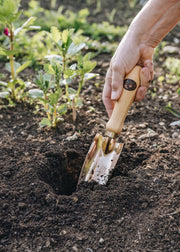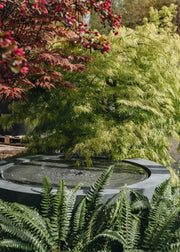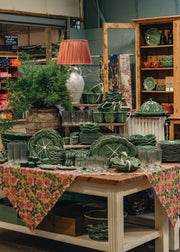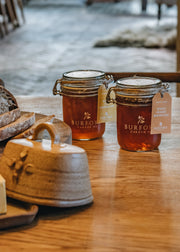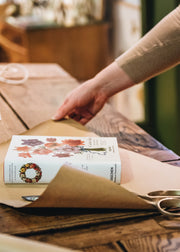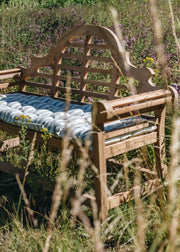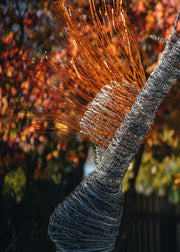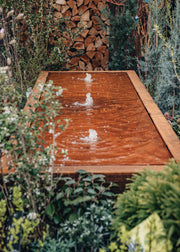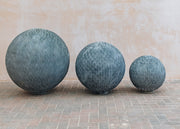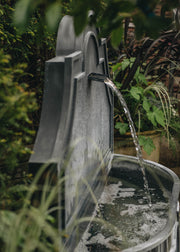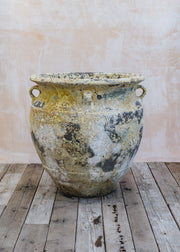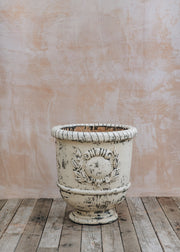In The Garden, Late Autumn

Just as the fall of leaves in late autumn reveals the underlying skeletons of the trees, so it is with the garden; the loss of foliage uncovers the ground plan, whether formal or relaxed. The accent also moves from a riot of vibrant blooms to more restrained areas of colour, even more important because they are restricted. For these reasons it is a good time to think about structure.
Many gardens, particularly those local to Burford, are defined by dry stone walls, a sympathetic background for mixed borders and a support for climbers. Now they reappear showing their natural hidden gems: asplenium, sempervivum and hardy sedum. Alchemilla mollis and other overflowing herbaceous plants have now retreated from the edges of paths and walkways, exposing the lines clearly, while decorative wooden or metal obelisks reappear as strong linear accents.
With the garden stripped back it is often possible to envisage an improvement without a radical rethink.
As deciduous foliage retreats, it is a good time to think about evergreen structure. Topiary contributes so much during the winter, providing silhouettes that look breath-taking as they emerge from the morning mist or become coated in frost or a dusting of snow. Taxus baccata (English Yew) clipped into cones or globes can be used singly to accentuate or in serried ranks to add rhythm. Small hedges of clipped buxus, enclosing a parterre or articulating a border, can be planted in box blight resistant varieties. Standard trees – Ilex mutchagara or Laurus nobilis - clipped like sentinel lollipops, look impressive flanking archways or as the focal point defining a vista.
Man made features are particularly striking in the autumn/winter garden. The glorious patination of zinc features is heightened by frost and beautifully accentuated by a gun-metal November sky. Even if empty, large French Olive Pots, their rims daubed in richly coloured glazes, look magical caught in the low sun. The texture and classical form of Salvage Pots, which look as if they have been raised from the seabed off Ostia, add gravitas to a terrace or become a focal point to a view. The industrial character of Corten steel water features (their rusted patina so prevalent at Chelsea this year), complements the natural effects in a winter garden.
Structural Garden Features
Some remarkable plants excel in November. Hellebores are perhaps the most beloved, being so tolerant of our climate. All year their deeply lobed, serrated leaves provide a foil for other blooms, but in November the exquisite flowers appear, wine coloured or white with pink or green striations and golden eyes.
Glossy leafed Skimmias make a statement now. Bedecked with startlingly white or scarlet berries (if female), or with clusters of flowers, they provide long-lived and vibrant colour when there is so little else. Sparkling also at this time of the year are variegated hollies – from the Gold Margined Holly with purple stems to the profoundly prickly, white margined Silver Hedgehog Holly.
So, don a coat, take your coffee into the garden and have a look with new eyes. Gardens never sleep.
